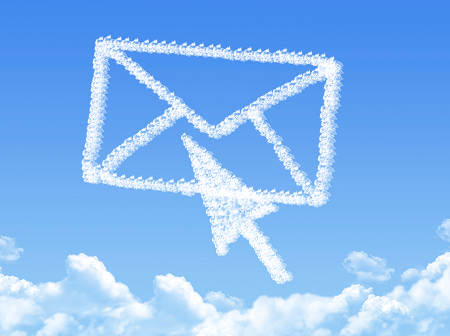Creator Of Network Email Ray Tomlinson DiesCreator Of Network Email Ray Tomlinson Dies
Ray Tomlinson, creator of the first network email has died. Tomlinson invented the 1971 email program that still relies on the use of the @ sign today.

8 Reasons Cloud Email Is A Smart Move Now
8 Reasons Cloud Email Is A Smart Move Now (Click image for larger view and slideshow.)
Ray Tomlinson, widely regarded as the creator of the first network email, has died. He was 74.
The Raytheon BBN scientist passed away on Saturday. Details of his death were not disclosed.
"It is with great sadness we acknowledge the passing of our colleague and friend, Ray Tomlinson. A true technology pioneer, Ray was the man who brought us email in the early days of networked computers. His work changed the way the world communicates and yet, for all his accomplishments, he remained humble, kind and generous with his time and talents. He will be missed by one and all," according to a statement Raytheon provided information.
Tomlinson developed the first network email in 1971, which allowed users to send person-to-person network email using the user's name, the @ sign, and the destination domain. At the time, electronic mail already existed, but he was the first to transmit a message between terminals attached to separate CPUs.
According to Tomlinson's recount of how he developed the first network email, the late engineer and scientist said in a Raytheon post:
I was making improvements to the local inter-user mail program called SNDMSG. Single-computer electronic mail had existed since at least the early 1960's and SNDMSG was an example of that. SNDMSG allowed a user to compose, address, and send a message to other users' mailboxes.
A mailbox was simply a file with a particular name. Its only special property was its protection, which only allowed other users to append to the file. That is, they could write more material onto the end of the mailbox, but they couldn't read or overwrite what was already there. The idea occurred to me that CPYNET could append material to a mailbox file just as readily as SNDMSG could. SNDMSG could easily incorporate the code from CPYNET and direct messages through a network connection to remote mailboxes in addition to appending messages to local mailbox files.
The missing piece was that the experimental CPYNET protocol had no provision for appending to a file; it could just send and receive files. Adding the missing piece was a no-brainer -- just a minor addition to the protocol. I don't recall the protocol details, but appending to a file was the same as writing to a file except for the mode in which the file was opened.
Next, the CPYNET code was incorporated into SNDMSG. It remained to provide a way to distinguish local mail from network mail. I chose to append an @ sign and the host name to the user's (login) name. The @ sign seemed to make sense. The purpose of the @ sign (in English) was to indicate a unit price (for example, 10 items @ $1.95). I used the @ sign to indicate that the user was "at" some other host rather than being local.
Tomlinson then used two computers that were sitting next to each other to conduct email tests. He sent his first messages in 1971 and the following year used a version of SNDMSG that included network email capabilities. Later generations of email protocols that appeared were developed by others.
[Read Email Etiquette: 5 Ways to Write Better Corporate Email.]
He noted in his historical recount that his network email was a pet project that he thought would be "neat" to try to develop, and not one formally assigned to him by his employer. Tomlinson joined Bolt Beranek and Newman (BBN) in 1967, which was later bought by Raytheon.
Tomlinson received a number of awards and accolades during his lifetime, including induction into the Internet Society's Internet Hall of Fame. He is ranked No. 4 on MIT's list of the top 150 innovators and ideas that have sprung from MIT, according to his biography posted on the Internet Hall of Fame.

About the Author
You May Also Like






